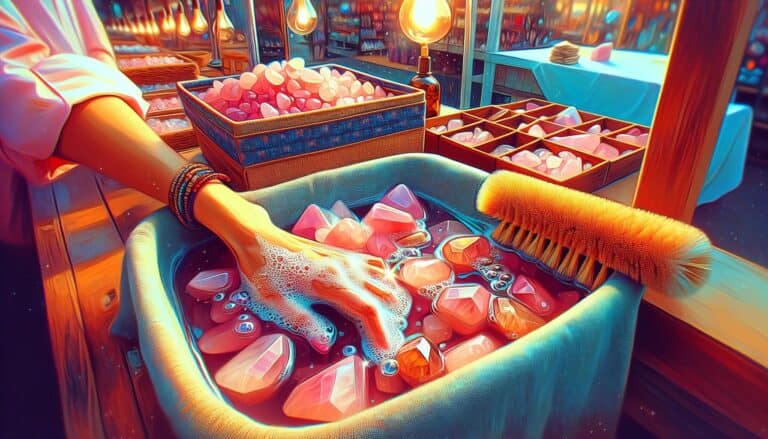Ever wondered what’s the real value of a diamond?
You’re not alone. Diamonds are synonymous with luxury and love, but their worth can be as multifaceted as the stones themselves. From carat size to clarity, numerous factors influence a diamond’s price tag.
Understanding diamond value isn’t just for jewelers. Whether you’re buying, selling, or simply curious, knowing how much a diamond is worth can be empowering. Let’s dive into the sparkling world of diamonds and discover what gives these gems their price.
Navigating the diamond market can seem daunting, but you’ve got this. With a bit of knowledge, you’ll be able to discern what makes a diamond worth its weight in gold—or should we say, carats?
Get ready to shine light on the true value of diamonds.
Diamond value hinges on the Four Cs: color, clarity, cut quality, and carat weight. Rarity, market demand, and provenance also shape its price. High-quality, colorless diamonds with minimal inclusions fetch the highest values. For purchases, prioritize reputable sellers and verify GIA certification, acknowledging diamonds’ historical and cultural significance.
What Is Diamond?
Diamonds are more than just dazzling gemstones; they’re marvels of nature formed over billions of years beneath the Earth’s surface. These stones are made of carbon atoms that have been subjected to incredible heat and pressure, which bond in a crystal structure that results in the hardest natural material known to man.
Unique Properties of Diamonds
The properties of diamonds set them apart from all other gemstones. Here are a few remarkable characteristics:
- Hardness: Diamonds rank highest on the Mohs scale of mineral hardness at a solid 10, meaning they can cut any other material.
- Brilliance: The way diamonds refract and disperse light contributes to their exceptional sparkle.
- Thermal Conductivity: Diamonds are excellent conductors of heat, contributing to their use in various industrial capacities.
Beyond their beauty, diamonds have practical applications as well. Their unparalleled hardness makes them ideal for use in cutting, grinding, and drilling tools. Meanwhile, their thermal conductivity and electrical insulation properties make them valuable in electronics and scientific instruments.
Cultural and Symbolic Significance
Diamonds have long been associated with luxury, status, and romance. They symbolize eternal love and commitment, making them a popular choice for engagement rings and wedding bands. Historically, diamonds have also been adorned by royalty and the elite, further cementing their status as a symbol of wealth and power.
Understanding the elemental makeup and properties of diamonds is essential in appreciating their worth and the numerous roles they play in both aesthetics and utility. Their natural formation process, combined with their unique characteristics, contributes to the valuation that distinguishes diamonds as both a financial investment and a cherished possession.
Diamond Prices: Factors That Affect Value

Color, Clarity, and Cut Quality
When delving into the nuances that determine a diamond’s price, the industry-standard criteria often emerge: color, clarity, and cut quality. Color in diamonds ranges from colorless to yellowish, with truly colorless diamonds commanding premium prices. The Gemological Institute of America (GIA) grades color on a scale from D (colorless) to Z (light yellow or brown). It’s vital to understand that even a slight variation in color can significantly impact the diamond’s value.
Clarity refers to the absence of inclusions and blemishes. The GIA clarity scale assesses diamonds under 10x magnification, grading them from Flawless (FL) to Included (I3). Here’s a simple truth: the fewer the inclusions, the rarer and more valuable the diamond.
Cut Quality is perhaps the most complex of the three Cs because it influences a diamond’s brilliance and fire. A high-quality cut maximizes the light that strikes each pavilion, reflecting it through the table and crown to your eye. Skilled craftsmanship dictates the stone’s final beauty and thus, its worth.
Carefully consider these facets when you’re assessing a diamond’s worth. They’re not just technical terms—they’re the blueprint of a diamond’s allure and value on the market.
Market Demand and Availability
Like any commodity, diamonds are subject to the laws of supply and demand. Market demand has a direct and powerful impact on prices. Trends in fashion, economic conditions, and cultural events can all influence consumer preferences and, in turn, the demand for certain types of diamonds. For example, the popularity of certain cuts or shapes can wax and wane, affecting their market price.
Availability also plays a crucial role. Diamonds that are rare in nature, such as those with exceptional color or large size, often fetch higher prices due to their scarcity. The diamond market’s flux is a dance between the rarity of certain gem qualities and the public’s ever-changing tastes.
Your diamond’s value is a reflection of its unique characteristics, the current market dynamics, and its intrinsic charm. Remember, a diamond’s worth is as multifaceted as the gemstone itself, influenced by a blend of factors both inherent to the stone and shaped by the world beyond.
Understanding Diamond: A Rare Gem
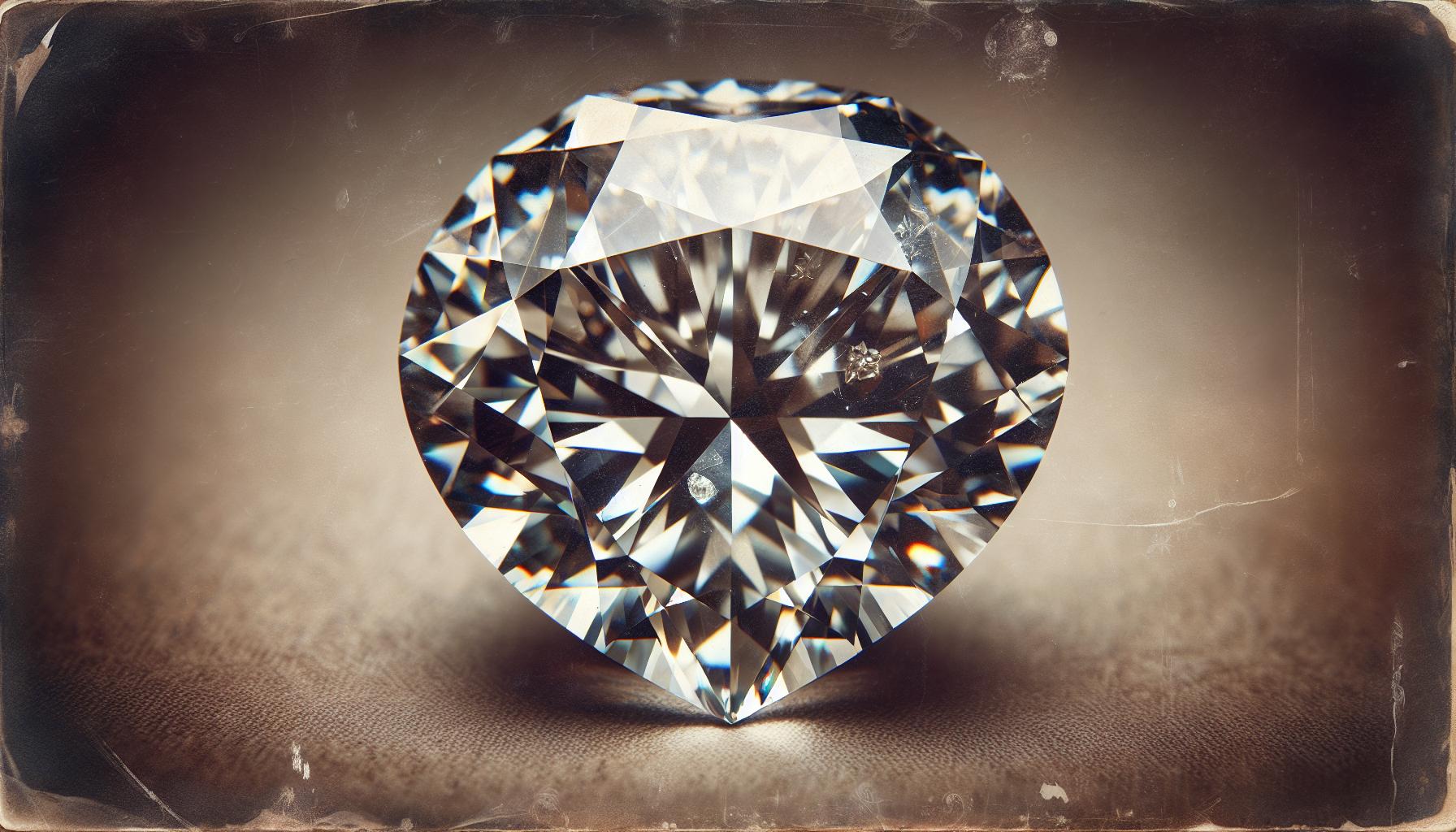
The Rarity of Diamond
Encountering a diamond is an encounter with the extraordinary. Less than 20% of the diamonds mined are considered gem-quality. Only these gems make it to jewelry stores, indicating a scarcity that heightens diamonds’ mystique and value. The journey of these stones from deep-earth formation to dazzling adornment spans billions of years, underlying their exceptional rarity.
Origins and Characteristics
Each diamond tells a story of immense pressure and time—conditions found over 100 miles beneath the Earth’s surface. It’s here, in the mantle, that diamonds form from carbon and are propelled upwards by volcanic eruptions. The conditions required are so specific that it’s a miracle they reach the surface at all.
Diamond characteristics are as remarkable as their origins:
- Hardness: Diamonds boast a Mohs scale rating of 10, making them the hardest natural material, thereby commanding durability and everlasting allure.
- Refractive Index: Their ability to refract light is unparalleled, resulting in the coveted sparkle that’s synonymous with luxury.
- Thermal Conductivity: Diamonds are excellent heat conductors, assisting jewelers in distinguishing them from imitations.
Beyond these qualities, individual diamonds carry unique identifiers—internal inclusions and color variations that create a one-of-a-kind fingerprint for each stone. The incredible journey from formation to discovery ensures that each diamond’s singularity emphasizes its worth, further impacting its market evaluation. Such distinctiveness, matched with the geological marvel of their creation, is why diamonds continue to captivate and are revered as treasures of the Earth.
Diamond Grading and Valuation
The Grading System for Diamond
When you’re in the market for a diamond, understanding the grading system is crucial to knowing what you’re paying for. Diamonds are graded based on the 4Cs—color, clarity, cut, and carat weight. Each of these factors contributes significantly to the stone’s overall value.
- Color: Ideally, diamonds should have no hue, allowing them to reflect more light. The Gemological Institute of America (GIA) grades color from D (colorless) to Z (light yellow or brown).
- Clarity: This measures the amount and size of imperfections in a diamond. Ranging from Flawless (FL) to Included (I), fewer imperfections mean a higher clarity grade.
- Cut: The quality of the diamond’s cut influences its symmetry, brightness, and fire. A well-cut diamond will have a more desirable sparkle and, thus, a higher price tag.
- Carat Weight: Diamonds are weighed in carats, with one carat equaling 200 milligrams. Larger diamonds are rarer and, therefore, more valuable.
Understanding the intricacies of each category allows you to make an informed decision and potentially negotiate better prices.
Certification and Appraisal
Before purchasing a diamond, make sure it comes with a certification from a reputable gemological lab. This document provides an unbiased analysis of the diamond’s characteristics and ensures that you’re getting what you pay for. The most notable certifications include:
- GIA: Gemological Institute of America
- AGS: American Gem Society
- EGL: European Gemological Laboratory
- IGI: International Gemological Institute
A separate but equally important aspect is the diamond’s appraisal, which estimates its retail replacement value for insurance purposes. Unlike a certification, an appraisal can be subjective and typically takes into account:
- The diamond’s 4Cs
- The current market conditions
- The stone’s rarity and provenance
Always have diamonds appraised by an independent and certified gemologist to protect your investment. This appraisal confirms the value of the diamond based on market research, expert analysis, and the attributes outlined in the certification. It’s also worth noting that a diamond’s appraisal may differ from its selling price, which is usually lower compared to the replacement value.
Current Market Trends in Diamond Pricing
In the fast-paced world of gemstones, keeping an eye on current market trends when evaluating diamond prices is essential. You’ll notice fluctuations are common, as diamond prices are influenced by a myriad of factors ranging from economic conditions to changes in consumer preferences. For instance, the demand for certain diamond shapes or sizes can surge, reflecting in their increased market value.
As of the latest reports, the emergence of lab-grown diamonds has begun to reshape the pricing landscape. These stones, which are chemically identical to mined diamonds, offer a more affordable price point, appealing to budget-conscious consumers. Despite their growing popularity, it’s still natural diamonds that command the highest prices due to their rarity and the allure of their natural origins.
| Diamond Type | Price Range |
|---|---|
| Natural | High |
| Lab-Grown | More Affordable |
When it comes to natural diamonds, the “Four Cs”—color, clarity, cut, and carat—continue to define their worth. Premium pricing is typically reserved for diamonds that hit the sweet spot of high clarity, optimal cut, and appealing color, combined with a carat weight that maximizes their desirability. High-quality diamonds in larger sizes have seen a particularly sharp price increase, reflecting their coveted status among consumers.
The market also shows a clear preference for certified diamonds, often reflected in their premium pricing. Certificates from reputable gemological laboratories like the GIA (Gemological Institute of America) reassure buyers of the quality and authenticity of their investment. Thus, diamonds with clear, respected certification can fetch higher prices.
Regarding global markets, economic fluctuations can lead to increased prices in diamonds due to their status as a safe-haven asset. When currencies are unstable, investors tend to turn to tangible assets like diamonds, which can temporarily hike up demand and prices.
Staying informed about these trends will help you make a savvy decision whether you’re investing in or selling diamonds. Always consult with certified gemologists and market experts to get the most accurate and current pricing information tailored to the specifics of the stone you’re interested in.
The Most Expensive Diamond
When it comes to assessing value, the most expensive diamonds stand out for their exceptional qualities and often storied pasts. These gems fetch staggering prices at auctions due to their sizes, histories, and the luxury they represent. The Pink Star, for instance, is one of the most expensive diamonds ever sold. Weighing a hefty 59.60 carats, this pink diamond sold for a jaw-dropping $71.2 million at a Sotheby’s auction in 2017.
Indeed, colored diamonds frequently top the charts as they are rarer than their clear counterparts. Take the Oppenheimer Blue, which sold for $50.6 million, making it the most expensive blue diamond in the world. These sale prices reflect not just the inherent qualities of the diamonds but also the market’s perception of their worth, driven by rarity and demand.
The allure of such gems goes beyond their monetary value. They are often enveloped in legend and luxury, making them highly sought after by collectors and connoisseurs. It’s the tale behind the stone, such as the famous Hope Diamond, with a history that dates back centuries, contributing to its estimated value of $200-$250 million.
When considering the worth of these luxurious diamonds, it’s essential to factor in their provenance or history of ownership. Diamonds with a royal or celebrity past carry additional value due to their association with iconic figures and moments in time. Thus, the value of a diamond is not only in its physical characteristics but also in the narrative that accompanies it.
Fluctuations in the market for these high-value diamonds are less common, as they are often viewed as works of art. Collectors are willing to invest large amounts of money for the prestige and uniqueness these pieces offer. This resilience to market changes adds another layer to their worth, making them timeless investments.
As you delve into the world of prestigious diamonds, remember that their prices reflect a combination of market demand, intrinsic qualities, and their unparalleled status. These factors make certain diamonds stand out as unique collector’s items, often fetching prices that transcend the typical “Four Cs” valuation.
Buying Diamond: Tips and Recommendations
Where to Purchase High-Quality Diamonds
When you’re on the hunt for a high-quality diamond, you want to ensure that you’re dealing with reputable sources. Authorized dealers and accredited jewelry stores are your safest bet for finding genuine diamonds. They maintain stringent standards and are typically affiliated with professional organizations, such as the Jewelers of America or the Gemological Institute of America (GIA).
Online retailers have risen in popularity due to the convenience they offer. Noteworthy platforms include Blue Nile and James Allen, which allow you to view and customize your diamond choice. However, ensure they have a solid return policy and customer service before making a purchase.
Consider auction houses like Sotheby’s or Christie’s, especially if you’re in the market for rare or historically significant diamonds. Remember that these venues might require a deeper understanding of diamond valuation to navigate successfully.
Before purchasing, do your homework:
- Verify the seller’s credibility through online reviews and industry associations.
- Inspect their certification policy to confirm that they provide official certificates for their diamonds.
- Inquire about after-sales policies, including returns and servicing.
Ensuring Authenticity and Value
The authenticity of your diamond is paramount in determining its value. Always ask for a gemological certificate from a reputable lab, such as the GIA, the American Gem Society (AGS), or the International Gemological Institute (IGI).
Here’s what you should look for in a certificate:
- The Four Cs: Ensure the document provides detailed information on the diamond’s color, clarity, cut, and carat weight. This information is critical for both valuation and insurance purposes.
- Laser Inscription: Some diamonds have their certificate number laser-inscribed on the girdle. This can be cross-referenced for additional security.
- Security Features: Modern certificates often contain security elements similar to banknotes to combat forgery.
Remember that apart from the four Cs, factors like fluorescence, symmetry, and polish can also influence a diamond’s value. Beyond the certificate:
- Consider an appraisal from an independent certified gemologist for an unbiased market value.
- Provenance can add to the value; diamonds with a story or historical relevance can fetch a higher price.
- Educate yourself on the current market price for diamonds with similar characteristics to what you’re buying.
By staying informed and careful about your purchase, you not only ensure its value but also enjoy the full splendor of your diamond for years to come. Remember that as with any significant investment, knowledge is just as important as the quality of the diamond itself.
Conclusion: Buying & Selling Diamonds
Understanding the value of a diamond is as multifaceted as the gem itself. You’ve learned that it’s not just about the Four Cs—cut, color, clarity, and carat—but also about the finer details that contribute to a diamond’s allure and value.
Remember, buying a diamond is an investment in beauty and rarity. It’s essential to do your homework, seek out reputable sellers, and ensure certification to validate your precious purchase. Whether you’re drawn to the romance of a stone with historical significance or the perfection of a modern cut, the true worth of a diamond is found in the confidence of your choice and the joy it brings you.
Trust your instincts, stay informed, and your diamond will forever symbolize the timeless elegance you seek.

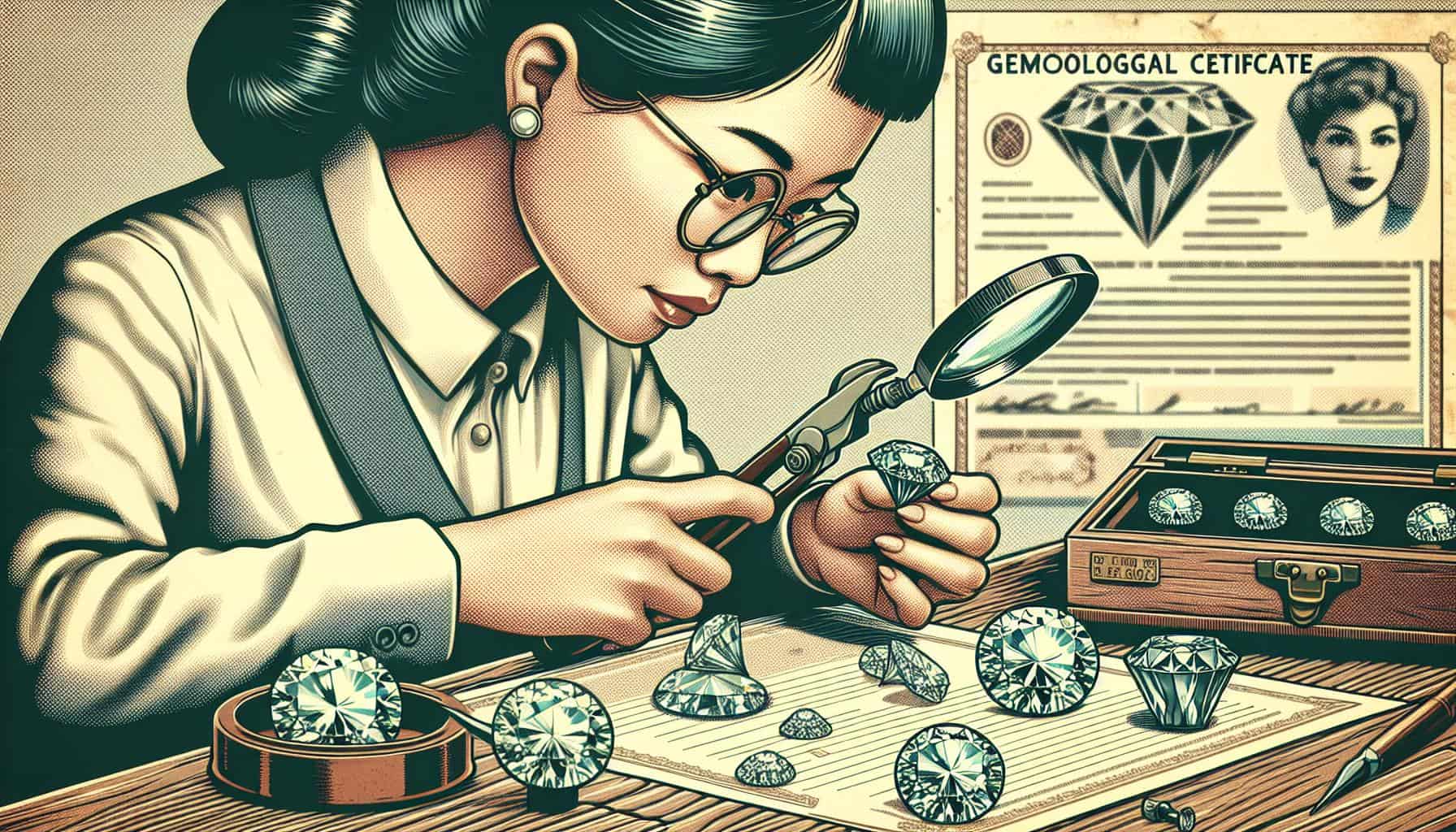
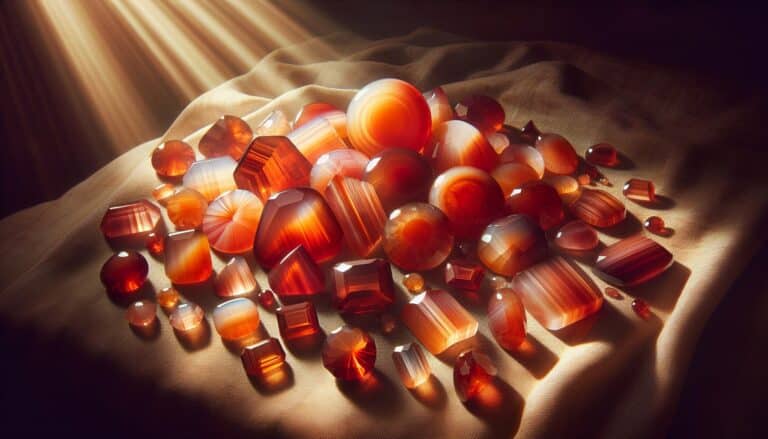

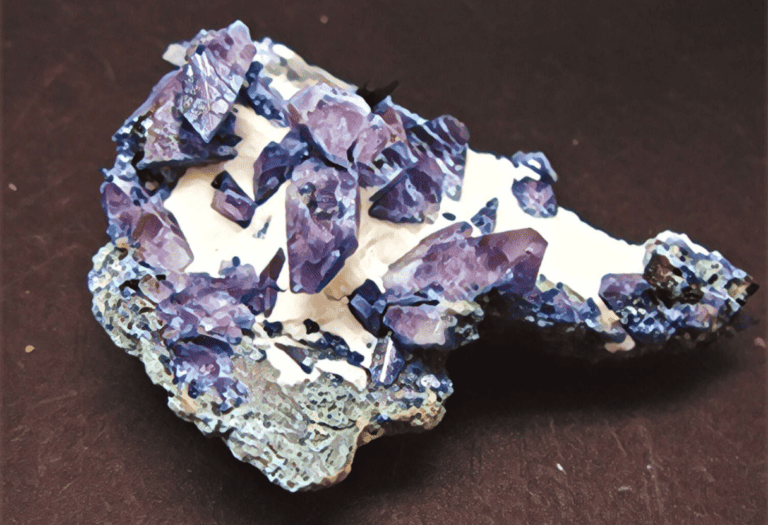
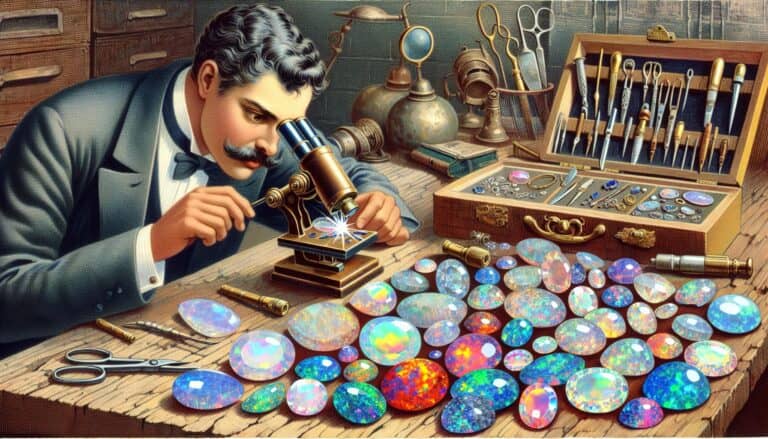
![NH Rockhounding Sites in [year]: Spots & Treasures](https://observationhobbies.com/wp-content/uploads/2024/01/7XT_yRWhzhwbBRthKOCkS-768x439.jpg)
